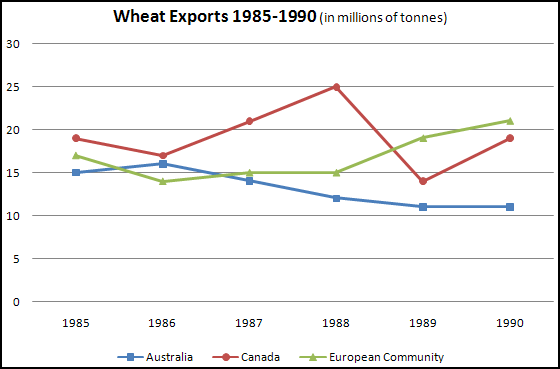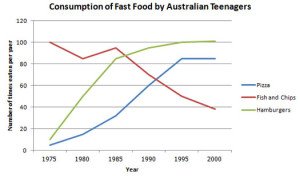IELTS Sample Answer # Graph wheat exports
The graph below shows the wheat exports in three countries during the year 1985-1990 in millions of tonnes.
Summarize the information by selecting and reporting the main features, and make comparisons where relevant.

wheat exports in 1985-1990
Sample Answer
The graph shows the variation in the amount of wheat exported in three countries over a period of five years i.e. 1985-1990.
Initially, in the year 1985, there wasn’t a major difference in the exports among the three countries, with Australia having 15 million tonnes wheat exported, while Canada and European Community exported approximately 18 and 20 million tonnes respectively.
For the next four years i.e 1986 to 1989, Canada experienced its highest wheat export in the year 1988 at 25 million tonnes and lowest peak of overseas sales when it dropped down to 15 million tonnes in 1989. During this period, Australia witnessed a gradual decrease from 15 million tonnes to 10 million tonnes. However, in contrast, European Community after hitting its lowest point in 1986 saw an increase in the amount of wheat brought to Europe in 1987 which remained constant until 1988.
Finally, in the year 1990, Canada and European Community exported 12 million tonnes of grain marking a gradual increase in their wheat trade. On the other hand, figures remained constant for Australia.
Overall, Australia observed a decline in its wheat export while the European Community witnessed an opposite trend. In contrast, there were major fluctuations in the wheat export in Canada.
THIS IS A BAND 7 ANSWER
Learn the art of describing graphs effectively at IELTSBAND7
08439000086, 08439000087, 07055710002, 07055710003,
IELTS Band 7 Dehradun
323,GMS Road, Above Axis Bank,
Near Ballupur Chowk, Dehradun , India – 248001

